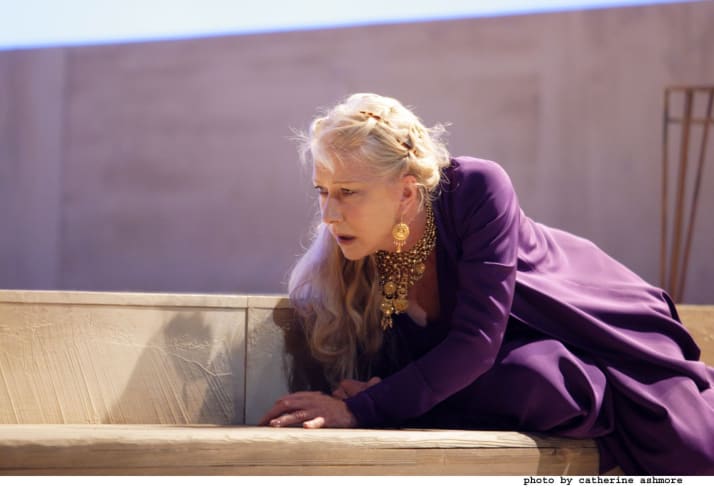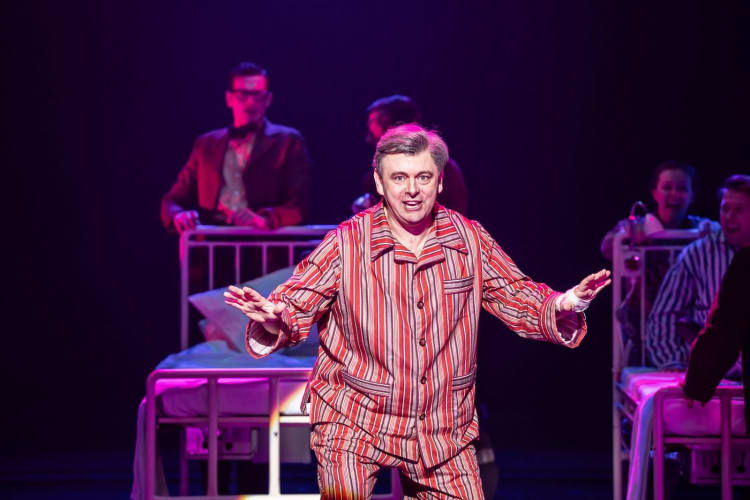When future generations look back and assess the achievements of Sir Nicholas Hytner during his tenure as director of the National Theatre, rather than recognising the stellar quality of his programming, his knack of filling theatres or work on and around the building, his most important legacy may be the introduction of National Theatre Live.
This week, the 15-year-old project celebrated the broadcast of its 100th title, Michael Sheen starring as Aneurin Bevan in Tim Price’s Nye, appropriately directed by Sir Nicholas’s successor, Rufus Norris. To commemorate this landmark, the National has released a 10-minute film reminding viewers of many of these successes, but also highlighting the risk and uncertainty of the project when it was conceived and launched.
To an extent, this was diminished by choosing a relatively safe starter, Dame Helen Mirren starring in Phèdre but, as with any live performance, things can go wrong, and apparently one significant line disappeared, although it is doubtful that many viewers will have noticed. Since then, the popularity has grown almost exponentially, to the point where by last year 11 million viewers had attended, and it seems safe to suggest that almost all will have relished the experience. To put this into perspective, that number is equivalent to filling the National’s largest space, the Olivier Theatre, around 10,000 times.
One imagines that, during the conception and development of NT Live, there must have been concerns about whether there would be demand, but also the issue of losing prospective theatregoers to cinemas.
On the first point, since the Metropolitan Opera House had successfully launched its own equivalent, Met Live in HD, three years before, the popularity was almost guaranteed, and it was apparent that any technical difficulties could be overcome.
When NT Live was launched, the theatre was going through an almost unprecedented period of very high occupancy, meaning that putting the most popular productions into cinemas was unlikely to hit attendances very hard. On the other hand, realistically, the vast majority of theatregoers would either come from London and the Home Counties or be occasional visitors from further afield.
In addition, Londoners would have the chance to see sold-out performances, while the quality and nature of the filming means that the experience is closely akin to but also significantly different from attending a theatre in person. As a result, some may very happily watch and love a play in the building before returning to watch it online, able to see actors in close-up and enjoy the visual experience from numerous angles.
With the introduction of this new screening programme, people in cinemas up and down the United Kingdom were able to enjoy live performances. Subsequently, this has spun out around the world with avid fans in far-flung places desperate to see the latest wondrous offering from UK’s National Theatre. Indeed, readers may know American friends for whom almost every play is a must-see, and the short film also focuses on the exploding popularity in China.
Although there must have been the occasional flop, most of us will instantly remember some of the greatest hits, with Danny Boyle’s Frankenstein being the monster that, helped by the presence and performances of Benedict Cumberbatch and Jonny Lee Miller, turned what might have been a niche venture into something far more popular. Everyone will have their own favourite, but it is likely that Richard Bean’s One Man, Two Guvnors and, more recently, Prima Facie by Suzie Miller starring Jodie Comer also hit all of the right buttons.
Another key development was an expansion to introduce plays from other theatres, allowing the wider London theatre scene to tour the world. A third was the launch of NT Live’s younger sibling, NT at Home, taking plays into people’s living rooms.
From a financial perspective, while the upfront costs must have been high, there can be little doubt that NT Live has proved to be a big money spinner for the National during a period when funding cuts have hit the company very hard.
There might also be a further spin-off in that some fans in the provinces or even overseas who become hooked on the cinematic experience will plan trips to London built around the desire to visit the South Bank Theatre in person and also enjoy the best that the West End can offer.
Fifteen years after its inception, it is safe to say that the only way is up for National Theatre Live with ever-increasing numbers of productions and viewers a racing certainty.

